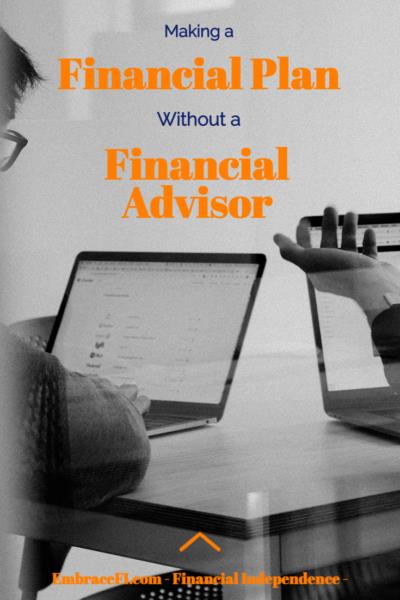6 Mins Reading Time
A financial plan has been described as ‘a road map for your financial future’ and that’s a pretty good jumping off point for the uninducted. Although, to be clear, a financial plan has just as much to do with your present as it does with your future. In short, your financial plan should outline how you’re going to get from where you are to where you want to be in the future. And that starts right now.
A financial planner can be helpful in establishing a financial plan. But if you’d rather save your hard-earned cash, you can absolutely put one together all by yourself! Having a financial plan helps put you in a position to make long-term goals a reality. Read on for eight steps to making a financial plan that don’t require you to consult a financial planner.
Sit Down and Map Out Your Goals for the Future
What is your net worth? How much do you plan to save this year and the year after and so on? Are you planning to take a vacation soon? How about a college fund for your rug rats? These are all things to consider when mapping a course for your financial future. A financial plan should be as comprehensive as possible and can always be updated as change occurs.
Take a Look at Your Monthly Spending and Create a Budget
Take a look at your bank statements for the past six to twelve months. Track what you’re spending your money on and figure out where you can make adjustments to stretch your dollar further. If you don’t already have a budget, making one should be part of your plan. 50/30/20 is a good jumping off point. Broken down, that’s 50% of your income going towards needs, 30% going for wants and 20% being earmarked for savings, investments, and debt reduction.
Establish an Emergency Fund
It’s always wise to expect the unexpected. If you don’t already have an emergency fund, setting one up could save you from going into credit card debt when you are faced with an unforeseen veterinary bill or an urgent automotive repair. If you’re wondering how to start an emergency fund, you can learn more about that here (insert link).
Plan Out 401(k) Contributions and Additional Investments
If your employer matches your 401(k) contributions, leverage that. Invest up to the match point, as it is literally free money, once you are vested. The remainder of your 20% allocated to savings can be dispersed between your emergency fund if you’re just starting one and a series of other investments. While it’s a good idea to have some funds in a savings account for immediate access, consider diversifying in some lower risk stocks or mutual funds. In the long term, this will be far more beneficial than the fraction of a percentage point in interest you will earn from the average savings account.
Revisit Your Investment Portfolio Frequently
What was working for you in the past may not be working in the present. Keep an eye on the market and make sure that your money is working for you. If your funds are underperforming, it may be time to consider a change of strategy.
Make an Estate Plan
This isn’t something anyone really enjoys but it’s important to know that your money is going exactly where you want it to when you pass. If you don’t have a will, things can get very messy for those by whom you are survived.
Consider Life Insurance
Investing in a life insurance policy is another great way to make sure they are cared for in your absence. No one likes thinking about their mortality but you will likely sleep easier knowing that your family is provided for in the event of the unexpected. Policies start at very reasonable monthly rates and you cannot put a price on peace of mind.
Make Sure Quarterly Taxes are a Part of Your Plan
I know I have said this before, but do not forget to save for and pay quarterly taxes if you are self-employed. Interest and penalties on unpaid taxes will take a huge bite out of any progress you have made throughout the year and all of that headache can be avoided by calculating your expected tax rate and paying on time.
Don’t Forget to Revisit and Look Back on Your Plan as Your Needs Change
Keep in mind that your goals (financially and otherwise) are likely to change over time. Your financial plan should be revisited and updated according to fluctuations in income and lifestyle. Your plan should be revisited any time you receive a pay raise, start a new job, or become unemployed.

